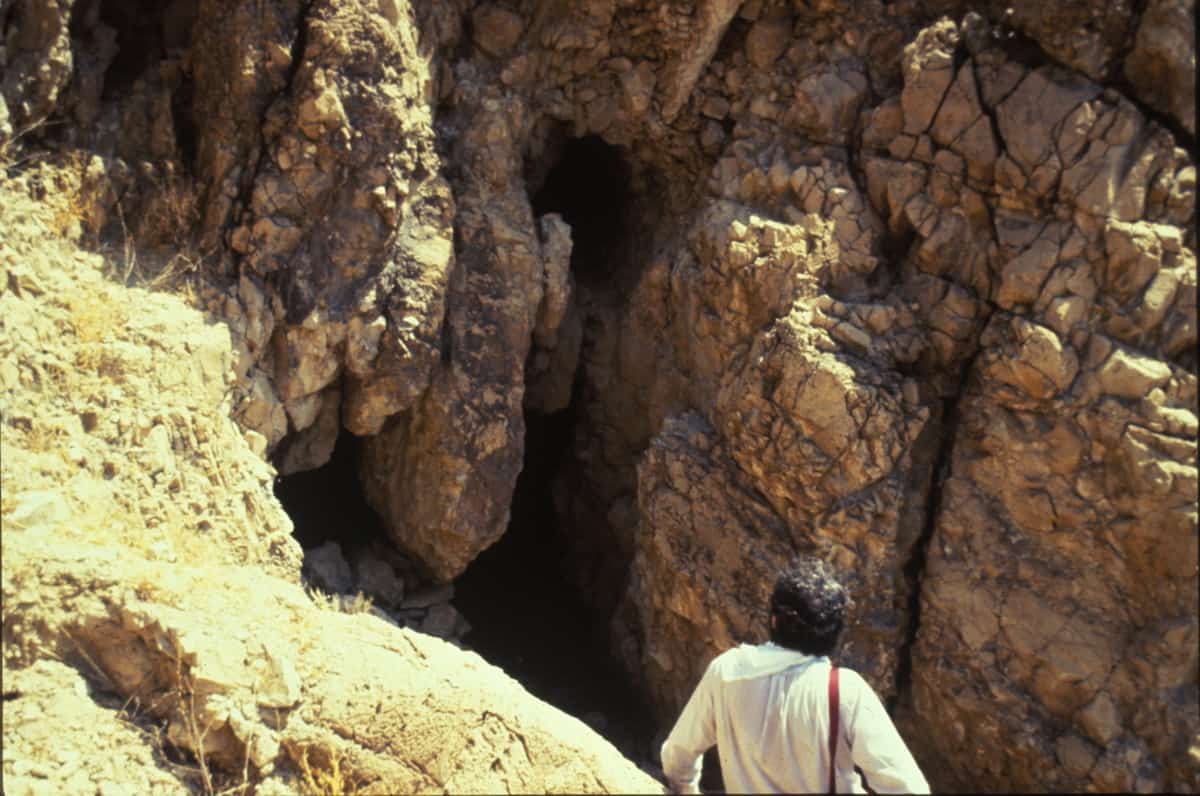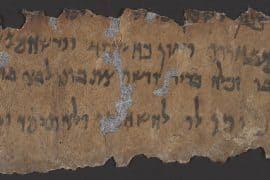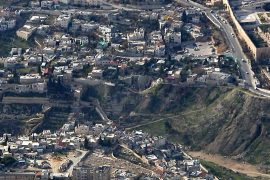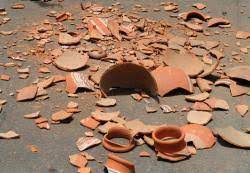
1. The Dead Sea Scrolls were discovered between 1947-1956 in 11 caves (5 by Beduin; 6 by archaeologists) on the upper northwest shore of the Dead Sea. The area is 13 miles east of Jerusalem, and is -1300 ft. below sea level (Jerusalem is +2400 ft. above sea level).
2. Near the caves are the ancient ruins of Qumran, which was excavated in the early 1950’s and appears to be connected with the Scrolls.
3. The Scrolls appear to be the library of a Jewish sect which was hidden away in caves around the outbreak of the Jewish-Roman War (66 C.E.). Archaeological evidence indicates the settlement had been inhabited since about 150 B.C.E.
4. The sect has most often been identified with the Essenes, who are mentioned by the historian Josephus and are in a few other sources, but are not in the N.T. They were an intensely messianic, apocalyptic, baptist, wilderness, new covenant group, led by a priest they called the “Teacher of Righteousness” who was opposed and possibly killed by the establishment priesthood in Jerusalem.
5) The Scrolls so far discovered represent a library of over 900 documents representing as many as 350 separate works in multiple copies, many of which are represented only by fragments. Cave 4 alone contained 520 texts in 15,000 fragments.
6) This library contains copies of the Scriptures (Isaiah Scroll), copies of other non-canonical books known to us (Enoch), and holy writings which the group itself produced (rules of faith, commentaries on Scriptures, and many other fascinating works otherwise unknown to us). In Cave 3, there was one Copper Scroll found, which contains a list of 64 hiding places where gold, silver, sacred objects, and other scrolls were hidden.
7) The major intact texts, from Caves 1 & 11, came into Israeli hands and were published by the late 1950’s–they are now in the Shrine of the Book museum in Jerusalem.
8) The bulk of the scrolls were in Jordanian control and were placed with a team of Christian (mostly Catholic–no Jewish) scholars who over the next four decades published eight volumes of material. The team was left intact by the Israelis after the Six Day War (1967). The publication schedule was constantly delayed and many outsiders found the official team to be arrogant and unyielding. The team was expanded in the 1980’s and was much more broadly based, finally including Jewish scholars and a more open approach to sharing materials.
9) As much as 40% of the Scrolls, mostly fragments from Cave 4, remained unpublished and unreleased (photos), until pressure mounted in the 1980’s. A breakthrough occurred in the Fall, 1991: the photos were published by the Biblical Archaeological Society in a non-official edition; a computer reconstruction, based on a concordance, was announced; the Huntington library pledged to open their microfilm files of all the scroll photographs.
10) The Scrolls are of great interest to both Jews and Christians. They represent a non-rabbinic form of Judaism, and also contain many important parallels to the Jesus movement. Final interpretations of these materials, with the newly released Scrolls fully factored in, remains open.
11) Scrolls related to those found in the caves around Qumran were also found at Masada, the Herodian fortress taken over by Jewish Zealots after the fall of Jerusalem in 70 C.E. and finally taken by the Romans in 73 C.E.
12) An ostracon (inscribed pottery sherd) containing a 16 lineletter written in 68 C.E. by someone giving their property over to the community was discovered at the site of Qumran in January, 1996.









Comments are closed.